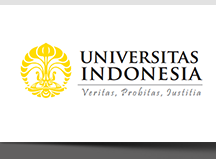Indonesian Journal of Medical Chemistry and Bioinformatics
Abstract
Vector control remains a critical component in the prevention of lymphatic filariasis, a disease transmitted by insect vectors. Natural compounds such as curcumin, camphor, and menthol are being explored for their bio-insecticidal properties due to their potential to inhibit key detoxification and neurological enzymes in insects, including acetylcholinesterase (AChE), glutathione S-transferase (GST), and cytochrome P450 oxidases (CYP450). A molecular docking study using SwissDock was conducted to evaluate the interaction of curcumin, camphor, and menthol with AChE, GST, and CYP450 enzymes. Binding affinity (ΔG), hydrogen bonding, and active site interactions were analyzed to assess the inhibitory potential of each compound. Curcumin showed the highest binding affinity across all target enzymes. AChE (-8.2 kcal/mol), GST (-7.9 kcal/mol), and CYP450 (-7.5 kcal/mol). It formed strong hydrogen bonds with key catalytic residues, suggesting effective inhibition of neurotoxicity and detoxification pathways. Camphor displayed moderate binding affinities with AChE (-7.1 kcal/mol), GST (-6.5 kcal/mol), and CYP450 (-7.2 kcal/mol), primarily through hydrophobic interactions. Menthol exhibited the weakest binding, with limited hydrogen bonding and lower affinities (AChE: -6.4 kcal/mol, GST:-5.9 kcal/mol, CYP450: -6.3 kcal/mol). The findings suggest that curcumin is a promising candidate for insect vector control through inhibition of critical enzyme systems involved in neurotransmission and detoxification. Camphor may offer moderate bioactivity, while menthol appears less potent. These insights support further exploration of phenolic compounds as environmentally friendly, natural insecticidal agents against vectors of lymphatic filariasis.
Bahasa Abstract
Pengendalian vektor tetap menjadi komponen penting dalam pencegahan filariasis limfatik, penyakit yang ditularkan oleh vektor serangga. Senyawa alami seperti kurkumin, camphor dan mentol sedang dieksplorasi untuk sifat bioinsektisidalnya karena potensinya untuk menghambat enzim detoksifikasi dan neurologis kunci pada serangga, termasuk asetilkolinesterase (AChE), glutation S-transferase (GST), dan sitokrom P450 oksidase (CYP450). Sebuah studi docking molekuler menggunakan SwissDock dilakukan untuk mengevaluasi interaksi kurkumin, camphor, dan mentol dengan enzim AChE, GST, dan CYP450. Afinitas pengikatan (ΔG), ikatan hidrogen, dan interaksi situs aktif dianalisis untuk menilai potensi penghambatan masing-masing senyawa. Kurkumin menunjukkan afinitas pengikatan tertinggi di antara semua enzim target. AChE (-8,2 kcal/mol), GST (-7,9 kcal/mol), dan CYP450 (-7,5 kcal/mol) yang membentuk ikatan hidrogen yang kuat dengan residu katalitik kunci, menunjukkan penghambatan yang efektif terhadap neurotoksisitas dan jalur detoksifikasi. Kamfer menunjukkan afinitas pengikatan sedang dengan AChE (-7,1 kcal/mol), GST (-6,5 kcal/mol), dan CYP450 (-7,2 kcal/mol), terutama melalui interaksi hidrofobik. Menthol menunjukkan ikatan terlemah, dengan ikatan hidrogen yang terbatas dan afinitas yang lebih rendah (AChE: -6,4 kcal/mol, GST: -5,9 kcal/mol, CYP450: -6,3 kcal/mol). Temuan tersebut menunjukkan bahwa kurkumin adalah kandidat yang menjanjikan untuk pengendalian vektor serangga melalui penghambatan sistem enzim kritis yang terlibat dalam neurotransmisi dan detoksifikasi. Camphor mungkin menawarkan bioaktivitas sedang, sementara mentol tampak kurang kuat. Wawasan ini mendukung eksplorasi lebih lanjut terhadap senyawa fenolik sebagai agen insektisida alami yang ramah lingkungan terhadap vektor filariasis limfatik.
References
- World Health Organization. Lymphatic filariasis.
- Hemingway, J.; Ranson, H.; Magill, A.; Kolaczinski, J.; Fornadel, C.; Gimnig, J.; Coetzee, M.; Simard, F.; Roch, D. K.; Hinzoumbe, C. K.; Pickett, J.; Schellenberg, D.; Gething, P.; Hoppé, M.; Hamon, N. Averting a Malaria Disaster: Will Insecticide Resistance Derail Malaria Control? Lancet 2016, 387 (10029), 1785–1788. https://doi.org/10.1016/S0140-6736(15)00417-1.
- Nagpal, M.; Sood, S. Role of Curcumin in Systemic and Oral Health: An Overview. J Nat Sci Biol Med 2013, 4 (1), 3–7. https://doi.org/10.4103/0976-9668.107253.
- Isman, M. B. Botanical Insecticides in the Twenty-First Century-Fulfilling Their Promise? Annu Rev Entomol 2020, 65, 233–249. https://doi.org/10.1146/annurev-ento-011019-025010.
- Miresmailli, S.; Isman, M. B. Botanical Insecticides Inspired by Plant-Herbivore Chemical Interactions. Trends Plant Sci 2014, 19 (1), 29–35. https://doi.org/10.1016/j.tplants.2013.10.002.
- Casida, J. E.; Durkin, K. A. Neuroactive Insecticides: Targets, Selectivity, Resistance, and Secondary Effects. Annu Rev Entomol 2013, 58, 99–117. https://doi.org/10.1146/annurev-ento-120811-153645.
- Vontas, J.; Kioulos, E.; Pavlidi, N.; Morou, E.; della Torre, A.; Ranson, H. Insecticide Resistance in the Major Dengue Vectors Aedes Albopictus and Aedes Aegypti. Pestic Biochem Physiol 2012, 104 (2), 126–131. https://doi.org/10.1016/j.pestbp.2012.05.008.
- Chiu, T.-L.; Wen, Z.; Rupasinghe, S. G.; Schuler, M. A. Comparative Molecular Modeling of Anopheles Gambiae CYP6Z1, a Mosquito P450 Capable of Metabolizing DDT. Proc Natl Acad Sci U S A 2008, 105 (26), 8855–8860. https://doi.org/10.1073/pnas.0709249105.
- Morris, G. M.; Huey, R.; Lindstrom, W.; Sanner, M. F.; Belew, R. K.; Goodsell, D. S.; Olson, A. J. AutoDock4 and AutoDockTools4: Automated Docking with Selective Receptor Flexibility. J Comput Chem 2009, 30 (16), 2785–2791. https://doi.org/10.1002/jcc.21256.
- Sousa, S. F.; Fernandes, P. A.; Ramos, M. J. Protein-Ligand Docking: Current Status and Future Challenges. Proteins 2006, 65 (1), 15–26. https://doi.org/10.1002/prot.21082.
- Sagnou, M.; Mitsopoulou, K. P.; Koliopoulos, G.; Pelecanou, M.; Couladouros, E. A.; Michaelakis, A. Evaluation of Naturally Occurring Curcuminoids and Related Compounds against Mosquito Larvae. Acta Trop 2012, 123 (3), 190–195. https://doi.org/10.1016/j.actatropica.2012.05.006.
- Jain, M.; Dhariwal, R.; Bhardava, K.; Das, S.; Shaikh, M.; Tendulkar, R.; Wani, R.; Sharma, M.; Delta, A. K.; Kaushik, P. Insilico and Invitro Profiling of Curcumin and Its Derivatives as a Potent Acetylcholinesterase Inhibitor. Biocatal Agric Biotechnol 2024, 56, 103022. https://doi.org/10.1016/j.bcab.2024.103022.
- Tran, T.-S.; Le, M.-T.; Tran, T.-D.; Tran, T.-H.; Thai, K.-M. Design of Curcumin and Flavonoid Derivatives with Acetylcholinesterase and Beta-Secretase Inhibitory Activities Using in Silico Approaches. Molecules 2020, 25 (16). https://doi.org/10.3390/molecules25163644.
- Subramani, P. A.; Narala, V. R.; Michael, R. D.; Lomada, D.; Reddy, M. C. Molecular Docking and Simulation of Curcumin with Geranylgeranyl Transferase1 (GGTase1) and Farnesyl Transferase (FTase). Bioinformation 2015, 11 (5), 248–253. https://doi.org/10.6026/97320630011248.
- Chetri, S.; Borah, L.; Ghosh, S. S.; Ahmed, R.; Deka, P. Larvicidal Efficacy of Azadirachta Indica (Neem) and Curcuma Longa (Turmeric) on Larvae of Culex: An in Silico Approach. Int J Mosq Res 2022, 9 (1), 32–37. https://doi.org/10.22271/23487941.2022.v9.i1a.577.
- Gupta, S.; Sasidhar, Y. U. Conformational Dynamics of Ribonuclease Sa and Its S48P Mutant: Implications for the Stability of the Mutant Protein. J Mol Graph Model 2019, 88, 71–80. https://doi.org/10.1016/j.jmgm.2019.01.001.
Recommended Citation
Subahar, Rizal; Winita, Rawina; Dwira, Surya; and El Bayani, Gulshan Fahmi
(2025)
"Targeting Detoxifying Enzymes in the Lymphatic Filariasis Vector: An In Silico Study on Curcumin, Camphor, and Menthol,"
Indonesian Journal of Medical Chemistry and Bioinformatics: Vol. 4:
No.
1, Article 1.
DOI: 10.7454/ijmcb.v4i1.1043
Available at:
https://scholarhub.ui.ac.id/ijmcb/vol4/iss1/1
Included in
Bioinformatics Commons, Medicinal Chemistry and Pharmaceutics Commons, Parasitic Diseases Commons







